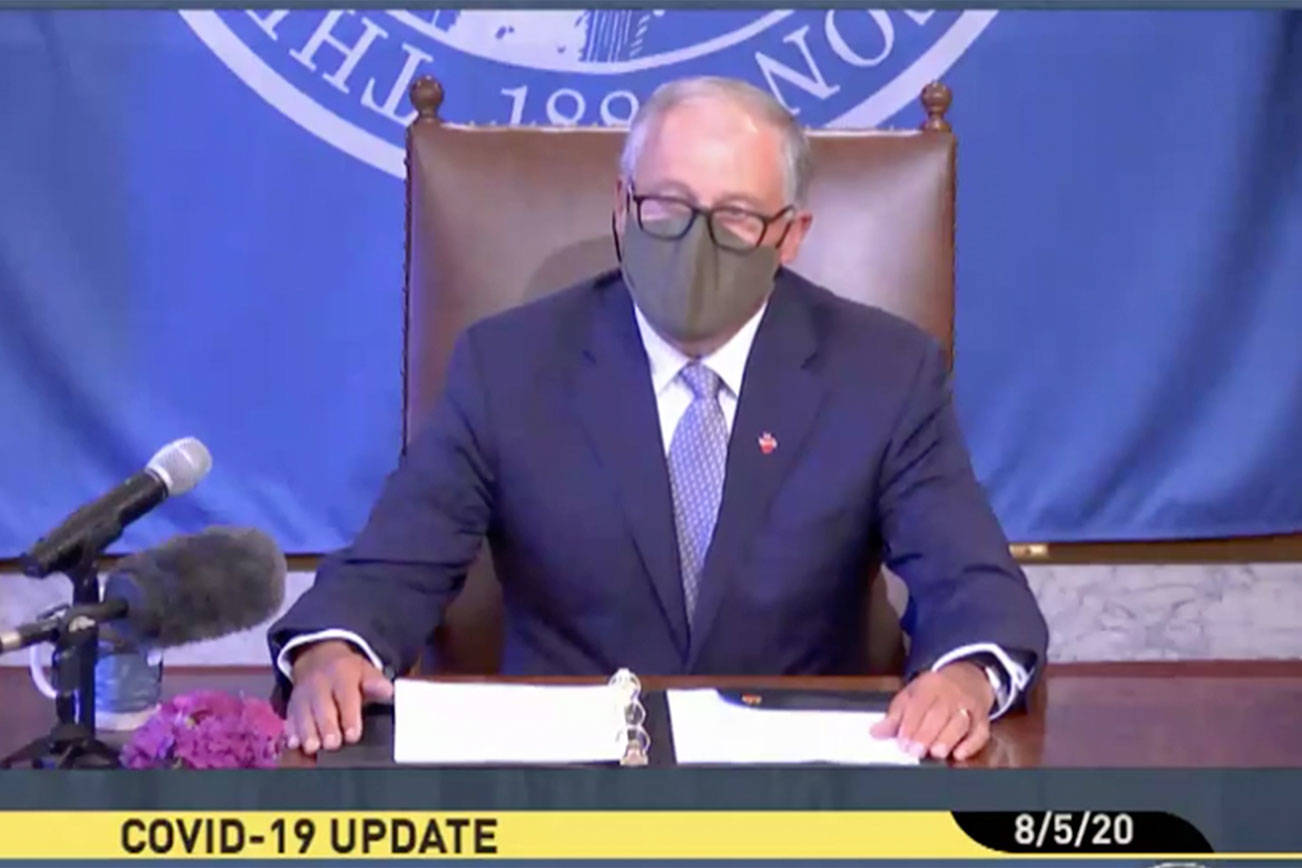Gov. Jay Inslee doesn’t want schools in the state’s coronavirus hot spots reopening this fall, but he stopped short Aug. 5 of ordering their closure, as he did in March.
Rather, at a news conference Inslee called for continued use of distance learning in public and private schools in counties like King County, where the potentially deadly virus is spreading most rapidly.
“Unfortunately, as we’ve been talking about for the last few weeks with this virus, the rate of transmission is not low enough as we need it to be,” Inslee said. “These are strong recommendations and they are based on science, they are based on the health of our children, and they are based on the shared experience that we are not going to allow our state to be hammered by this virus the way other states and countries have been.”
The governor outlined a recommendation from health and education leaders that divides the state’s 39 counties into categories of low, moderate and high risk based on their respective infection rates.
King County is among 25 counties deemed high risk, which is defined as having 75 cases or more per 100,000 residents in a two-week period.
Nine counties are in the moderate-risk category, with 25 to 75 cases per 100,000, and five counties are in the low-risk category, with fewer than 25 cases per 100,000 residents.
Schools in high-risk counties should strongly consider distance learning, with an option for limited in-person instruction for students with special needs, according to the recommendations.
All in-person extracurricular activities, including sports and the performing arts, should be canceled under recommendations Inslee said were crafted in concert with the state Department of Health and the Office of the Superintendent of Public Instruction.
In moderate-risk counties, schools should consider in-person learning options for elementary students and those with special needs while maintaining distance learning for middle school and high school students.
Elementary students in low-risk counties should return for full-time in-person learning, under the recommendations. However, schools are encouraged to offer a blend of in-person and distance learning for middle and high school students.
Even before Inslee’s announcement, leaders of public schools across King County had decided not to bring students back to campuses that have been closed since March.
Districts that choose remote learning must combat the issues they faced in the spring. Parents, teachers and administrators have all acknowledged problems surrounding internet access, food insecurity and general education woes.
“We are a long ways ahead of where we were last spring,” state Superintendent Chris Reykdal said during the Aug. 5 news conference, noting “we’ve done a lot of work here to be ready for this,” but nothing about this is a done deal.
Statewide, administrators started making plans to reopen as soon as they closed their doors in the spring.
In June, Rekydal told reporters he expected students would return to classrooms for the upcoming school year.
His office issued 55 pages of guidance school districts needed to follow to reopen with any degree of face-to-face instruction. He also directed districts to submit reopening plans to the state at least two weeks before the first scheduled day of classes.
At the time, Inslee issued a proclamation clearing the way for such a reboot of the state’s education systems — while warning it might not happen.
“This virus is unpredictable and has upended our regular ways of doing everything. We cannot guarantee that school will open in fall,” he said. “Kids need to be learning but they also need to be safe and healthy.”
Since then, COVID-19 cases spiked again as counties advanced through the governor’s phased “Safe Start” re-opening plan.
Also Wednesday, Inslee said the Office of the Superintendent of Public Instruction will receive $8.8 million in federal CARES Act funding to help pay for internet connectivity and technology needs for low-income families. In addition, the governor’s office is working with philanthropists and technology associations to fill the technical needs of students amid the continuance of distance learning.


